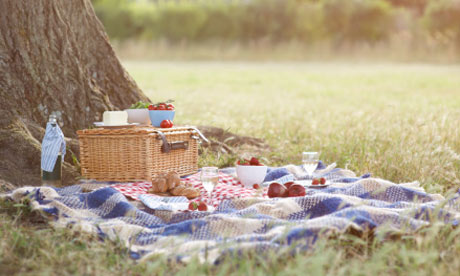
"Writing about food is my favourite part of writing, just as eating is one of my favourite parts of life. As a child, I re-read food scenes for comfort, and for the joy of the keen hunger that they produced, and, once I had learned to cook, for inspiration."
Katherine Rundell grew up in Africa and Europe. Her first book, The Girl Savage, was born of her love of Zimbabwe and her own childhood there; her second, Rooftoppers, was inspired by summers working in Paris and by night-time trespassing on the rooftops of All Souls College. Oxford. She is currently working on her doctorate alongside an adult novel.
1. Everything Roald Dahl wrote
I have eaten a lot of chocolate in my life, but nothing has ever been as delicious as I know a Willy Wonka's Whipple Scrumptious Fudgemallow Delight would be. Dahl injects a glorious spirit of anarchy into his food, and the food, in turn, makes the maddest story seem solid and real.
2. Little Women by Louisa May Alcott
Amy's pickled limes are both enticing and puzzling. "If one girl likes another, she gives her a lime," she say. "If she's mad with her, she eats one before her face, and doesn't offer even a suck." A few years ago I found a simple 19th-century recipe for pickled limes: scrubbed limes in a jar of water and seasalt. Possibly I didn't leave them to marinade for long enough. They were not delicious.
3. The Wolves of Willoughby Chase by by Joan Aiken
"Mr Wilderness's porridge was very different from that served in Mrs Brisket's school. It was eaten with brown sugar from a big blue bag, and with dollops of thick yellow cream provided by Mr Wilderness's two cows."
This is the best description of breakfast I have ever read. Although, for years - until today, in fact – I imagined they were eating the porridge itself out of the blue bag and had always wondered how that would work: like an icing bag, perhaps.
4. Winnie the Pooh by AA Milne
Pooh made gluttony look not only charming, but inevitable.
"When Rabbit said, 'Honey or condensed milk with your bread?' [Pooh] was so excited that he said, 'Both,' and then, so as not to seem greedy, he added, 'But don't bother about the bread, please.'"
5. How I Live Now by by Meg Rosoff
Daisy, caught in the middle of a war, says this: "I made jam sandwiches for breakfast, and they tasted hopeful." In 10 words she evokes all the desperation and determination and love that colour the book.
6. I Capture the Castle by Dodie Smith
It is almost impossible to read this, in the first pages of the book, and not fall in love, irrevocably, with Cassandra Mortmain:
"Goodness, Topaz is actually putting on eggs to boil! No one told me the hens had yielded to prayer. Oh, excellent hens! I was only expecting bread and margarine for tea, and I don't get as used to margarine as I could wish. I thank heaven there is no cheaper form of bread than bread."
7. Little House in the Big Woods by Laura Ingalls Wilder
"Grandma stood by the brass kettle and with the big wooden spoon she poured hot syrup on each plate of snow. It cooled into soft candy, and as fast as it cooled they ate it. They could eat all they wanted, for maple sugar never hurt anybody."
Laura Ingalls Wilder's books have danger and love and bears in them, but all I remember of them with real clarity is the food, and the wonderful piercing hunger it produced.
8. Saffy's Angel by Hilary McKay
The brilliant madcap family has brilliant madcap meals: "Indigo creates meals by saying 'That and that and that!' Then in everything goes, with chillies. Grilled cheese appears on top of everything except curry but including the birthday apple cake he made for his friend David."
9. What Katy Did by Susan Coolidge
The quiet wit and magic of this book comes out most sharply in its descriptions of food:
"The 'something delicious' proved to be weak vinegar-and-water. It was quite warm, but somehow, drank up there in the loft, and out of a bottle, it tasted very nice. Beside, they didn't call it vinegar-and-water: of course not! Each child gave his or her swallow a different name, as if the bottle were like Signor Blitz's and could pour out a dozen things at once. Clover called her share 'Raspberry Shrub,' Dorry christened his 'Ginger Pop,' while Cecy, who was romantic, took her three sips under the name of 'Hydomel,' which she explained was something nice, made, she believed, of beeswax."
10. All the picnics in Enid Blyton
"The high tea that awaited them was truly magnificent. A huge ham gleaming as pink as Timmy's tongue; a salad fit for a king. In fact, as Dick said, fit for several kings, it was so enormous.... 'Lettuce, tomatoes, onions, radishes, mustard and cress, carrot grated up - that is carrot, isn't it, Mrs. Penruthlan?' said Dick. 'And lashings of hard-boiled eggs.'"
It may be that raw onions and radishes are no longer on most young people's dream menus, but a list of fictional food without Blyton on it would be incomplete. The food in Blyton always seems real and attainable and satisfying: and the image of a lashing of hard-boiled eggs is a good one.

